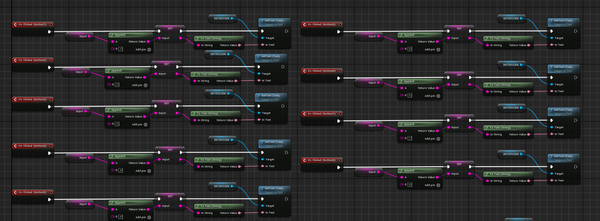The Early Train

Each carriage holds its own sinister secrets, and survival depends on your ability to follow a mysterious set of rules. From avoiding eye contact with shadowy figures to staying perfectly silent as something monstrous passes by, every step you take could be your last if you're not careful. The rules aren’t just suggestions...they are your lifeline.
Information:
Type: First-Person Horror
Genre: Survival Horror, Psychological, Puzzle Adventure
Platform: PC
Image Gallery
The Early Train is a first-person horror experience that takes you on a unexpected journey into the unknown. As you board a seemingly ordinary train, you soon realize that this is no ordinary ride, this train is a gateway to another world, one where the rules of reality no longer apply.
As you progress through the train, the atmosphere becomes tense, with every carriage offering new challenges and horrors. The faint sounds of whispers, the flickering lights and the unsettling feeling of being watched will keep you on edge as you desperately try to find a way back to the real world.
Mechanics
The mechanics of the game were designed to fit a bigger game idea, implemented into one level as an example of its potential. In the first carriage, the player is introduced to the story of the game. A businesswoman is on her way home from work and is awaiting her train. Suddenly, an early train catches her eye and she decides to embark it to arrive home sooner. Little did she know that this train was anything but ordinary. She passes out and awakes in her sleeping carriage and finds a crumpled note on her bed. Game Key Points: -The note includes a set of rules to follow throughout the game. -Each carriage has its own specific rules the player must respect to survive the night. -The game’s rules are intentionally vague, requiring players to trust their intuition. Starting Carriage Gameplay: -The first boss is the Queen of Spiders, whose rule is "Do not open Room Number 5; the dark is your friend." -The lights must be turned off for the player to roam the carriage. -If the player fails to turn off the lights, they die and must restart. This teaches the player to quickly find the light switch before exploring. -The player can roam the train, decode a code to unlock a room, where they retrieve an offering. -Bringing the offering to the Queen of Spiders allows her to grant mercy and lets the player progress to the next carriage.
Design
I designed the contrast between isolation and brief moments of human interaction to both immerse the player in the world and set the tone for the carriages ahead. These encounters are meant to spark curiosity and raise questions : Why is this happening? Who are these people? , drawing the player deeper into the mystery. Creating this sense of intrigue was essential to capturing the player’s attention and encouraging engagement with the unfolding story.

Material Setup for Glowing Numbers: Explored how blueprint-driven effects interact with material parameters, adjusting values to refine the glow intensity and achieve a precise visual effect.



Blueprints for turning the light on and off, and the consequence of roaming around with the lights on:


If the player fails to turn off the lights, they are offered a second chance to turn them off though audio cues. If they fail, they die and have to restart the level. This teaches the player to quickly find the light switch before exploring.

Blueprints for opening/closing doors, using a single timeline played in reverse.

Blueprints for pick-ups: this is a simple item pickup which hides the visibility of the item upon being interacted with.


Designed a widget-based minigame where players must locate and match number order to corresponding room numbers.
Entering the correct sequence unlocks the door, while an incorrect attempt triggers an audio cue as feedback.





